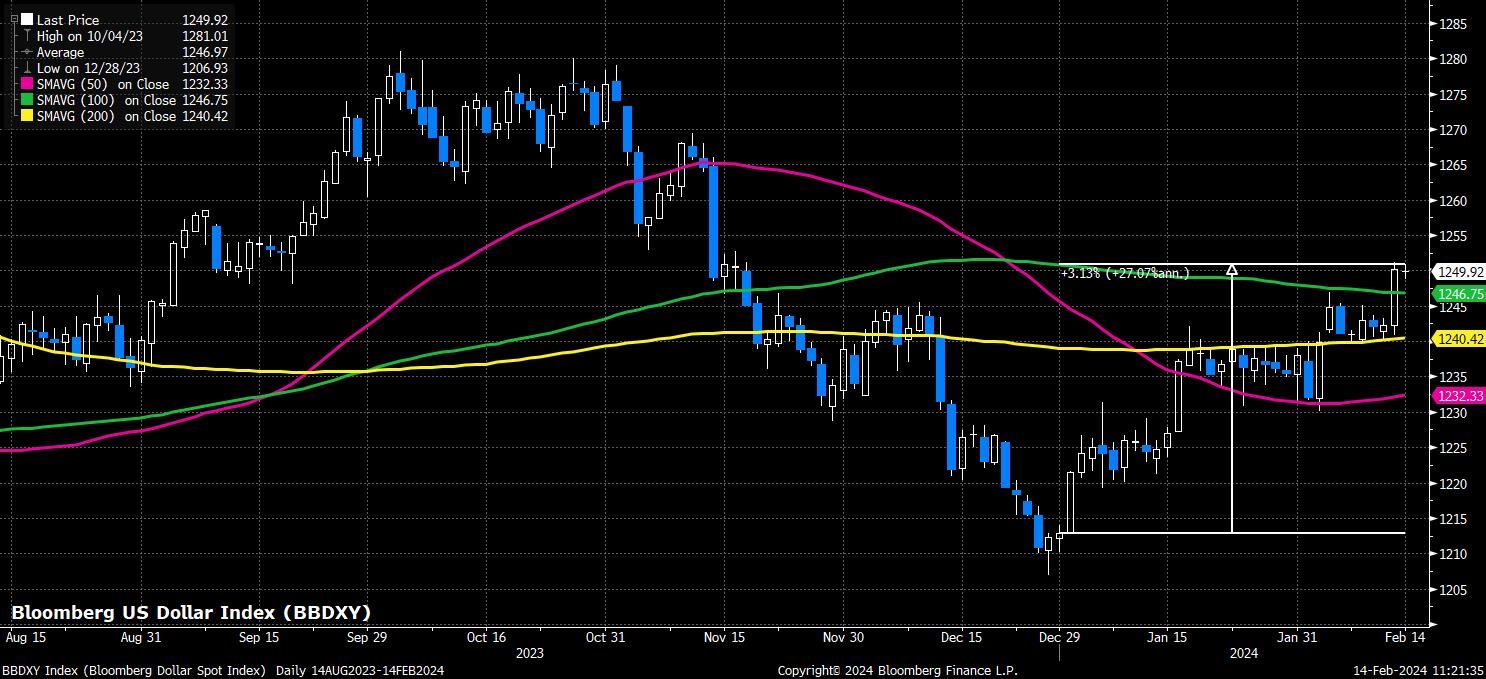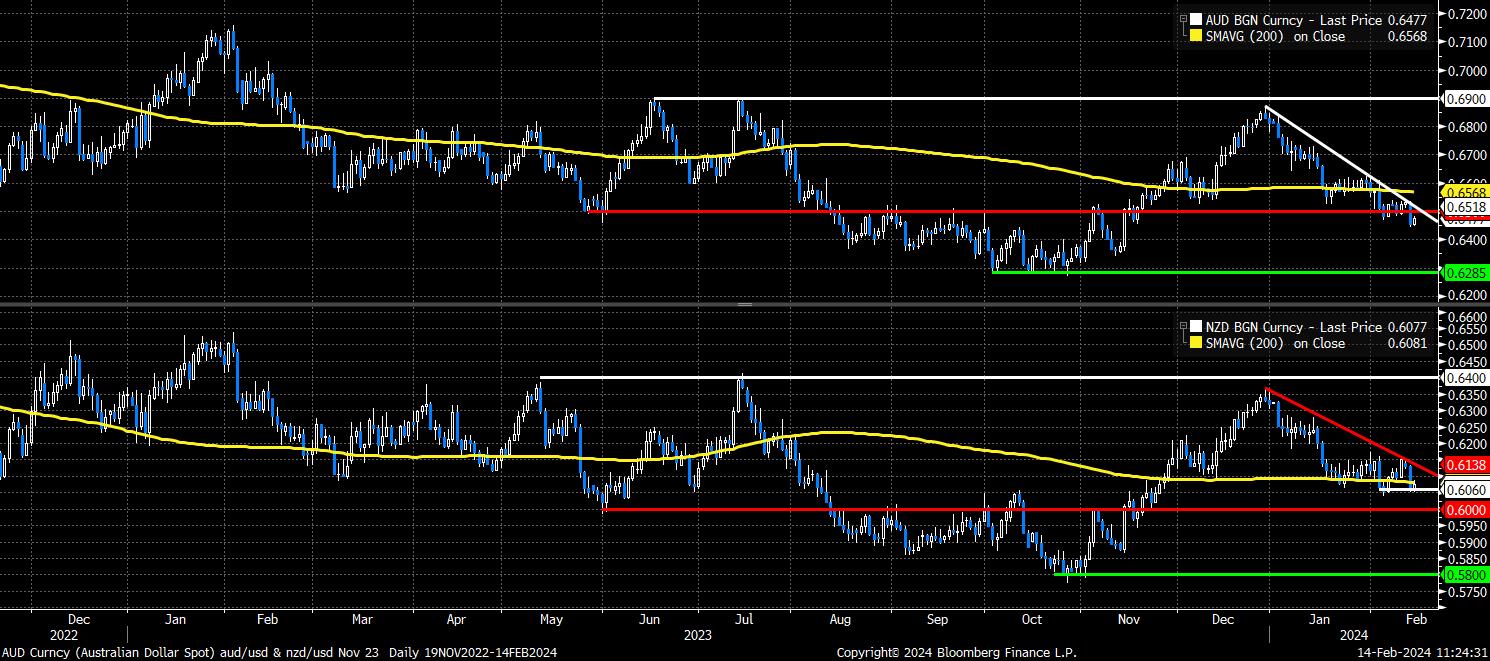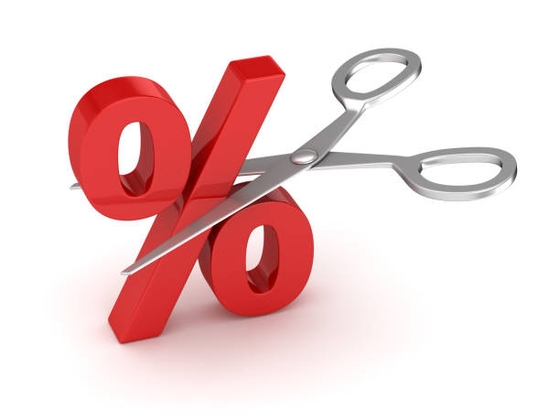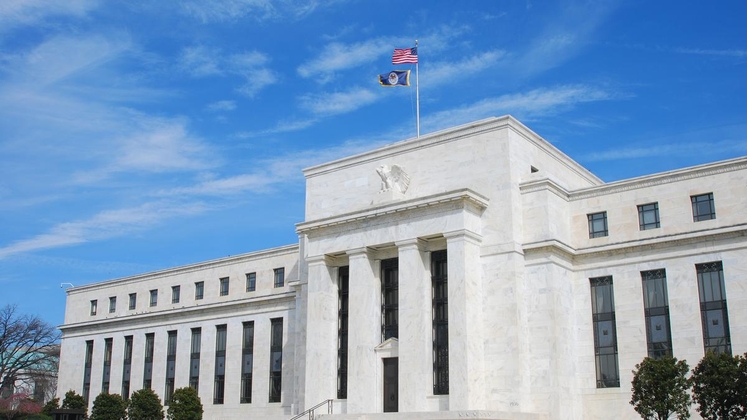USD Upside To Persist Post-CPI

For context, as is at this point well-documented, the greenback sits as by far the best performing G10 currency on a YTD basis. The DXY, albeit with its 60ish% weighting towards the EUR, has gained over 4% since the turn of the year, testing the psychologically key 105 figure to the upside, while Bloomberg’s broader, and trade-weighted, index of USD strength (the BBDXY) has rallied a not-too-shabby 3% since 2024 got underway.
Digging a little deeper, the USD’s gains so far in 2024 have not only been broad-based, but the laggards within G10 FX can all be easily explained. The JPY and the CHF stand as the worst performers, with the latter remaining a proxy Treasuries trade, and bearing the brunt of the sell-off seen across the curve, while the Swissie has faced ever-stiffening headwinds as inflation dips into the low-1%s, and money markets heighten bets on the SNB delivering the first cut as soon as next month.
On the flip side, the GBP has remained relatively firm for much of the year, with cable treading water in a 1.26 – 1.28 range, albeit with downside now beginning to prevail, as the BoE look set to maintain Bank Rate higher for longer than peers. The loonie, meanwhile, has also benefitted from a marginally more hawkish than expected BoC, along with firmer crude prices as geopolitical tensions persist in the Middle East.
Clearly, all of this begs the question of where the greenback is likely to head next. At present, both a fundamental and a technical perspective suggests that upside looks set to continue over the short-, and medium-run.
From a fundamental standpoint, there are two principal arguments for the USD to make further headway. Firstly, is the ‘US exceptionalism’ narrative that remains dominant – growth is much faster, and more resilient, than in DM peers; the labour market significantly less slack; policy set to remain tighter than elsewhere, as a result of inflation seemingly proving somewhat stickier than elsewhere, per the latest CPI figures.
This leads nicely onto the second argument for the buck to extend recent gains, in that there is nothing else in the G10 universe that looks particularly attractive as a long at this point in time. To cut a long story short – the EUR looks set to soften as the ECB become one of the first G10s to cut (albeit may rebound in H2 if policy easing spurs an economic rebound); the JPY remains unattractive all the while Treasuries sell-off, and a prolonged BoJ tightening cycle remains elusive; the GBP, despite the potential for ‘higher for longer’ policy, must continue to battle anaemic economic growth; the AUD and the NZD still look poorly amid the continued lack of recovery in, and dismal sentiment towards China; the CAD seems unlikely to gain significant ground as the BoC move in line with the FOMC; and, lastly, the CHF looks to soften as the SNB become the first G10 to cut rates.
In sum, this is not only a ‘US exceptionalism’ story, but also one of dollar demand by default, given the unattractiveness of almost everything else in the G10 FX universe.
From a technical standpoint, the outlook also looks promising, with a number of key levels breaking, or on the verge of breaking, across the board.
The DXY, for instance, as noted above, is near a break north of the psychologically key 105 figure, having now comfortably cleared the 100-day moving average.
The EUR now trades below the 1.07 figure, with spot at its lowest since mid-November; 1.06 looms if that break holds on a closing basis.
Cable has also slipped, below its own 200-day moving average, with the YTD low at 1.2520, then the 1.25 big figure, where the 100-day MA also resides, now in the crosshairs.
Over in Asia, the JPY has now cleared the 150 figure, continuing to track the Treasury sell-off almost tick-for-tick, with little sign that the MoF will embark on anything other than jawboning, as the prior highs just north of the 152 handle loom.
Down under, the AUD has broken south of the 65 figure, to new YTD lows, and beneath the 61.8% retracement of the Q4 23 rally, while the NZD has dipped beneath its 100- and 200-day moving averages, probing prior lows at .6050.
Overall, it seems that the market is likely to continue buying dollars, and wearing diamonds, for some time to come.
Related articles
Pepperstone không đại diện cho việc tài liệu được cung cấp ở đây là chính xác, hiện tại hoặc đầy đủ, và do đó không nên dựa vào nó. Thông tin, có phải từ bên thứ ba hay không, không được coi là một khuyến nghị; hoặc một đề nghị mua bán; hoặc một lời mời mua bán bất kỳ chứng khoán, sản phẩm tài chính hoặc công cụ nào; hoặc tham gia vào bất kỳ chiến lược giao dịch cụ thể nào. Nó không tính đến tình hình tài chính hoặc mục tiêu đầu tư của độc giả. Chúng tôi khuyên bất kỳ độc giả nào của nội dung này nên tìm kiếm lời khuyên của riêng mình. Mà không có sự chấp thuận của Pepperstone, việc sao chép hoặc phân phối lại thông tin này không được phép.

_D_2024-02-14_11-22-31.jpg)
_eur_spot_2024-02-14_11-22-46.jpg)
_2024-02-14_11-23-06.jpg)
_j_2024-02-14_11-23-37.jpg)




